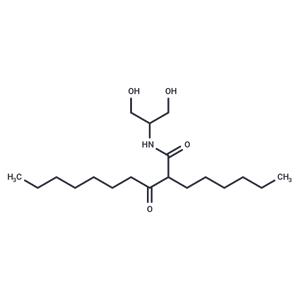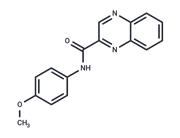| Name | K6PC-5 |
| Description | K6PC-5 is a ceramide derivative that acts as an activator of sphingosine kinase 1 (SPHK1), inducing a swift and temporary rise in intracellular calcium levels. With its potential applications in skin diseases associated with abnormal keratinocyte function, as well as in studies on neurodegeneration and virus infection, K6PC-5 presents a promising compound for research purposes. |
| In vitro | K6PC-5 (1-10 μM; 24 h) increases involucrin and loricrin levels in a dose-dependent manner in normal human epidermal keratinocytes (NHEKs), promotes differentiation and proliferation of keratinocytes via intracellular Ca2+ signaling, and stimulates the phosphorylation of p42/44 extracellular signal-regulated kinase and c-Jun N-terminal kinase[1]. K6PC-5 (1-10 μM; 24 h) also promotes fibroblast proliferation and collagen synthesis in human fibroblasts, inducing intracellular Ca2+ concentration ([Ca2+]i) oscillations[2]. Additionally, K6PC-5 (10, 25, and 50 μM; 48 h) significantly attenuates EBOV infection in EBOV-infected EA.hy926 cells, reduces virus titers in cell supernatants, and decreases VP40 levels in a concentration-dependent manner[3]. |
| In vivo | In intrinsically aged hairless mice (56 weeks old), topical application of 1% K6PC-5 for 2 weeks significantly increased the number of dermal fibroblasts and collagen production, resulting in a notable increase in dermal thickness[2]. |
| Storage | Powder: -20°C for 3 years | In solvent: -80°C for 1 year | Shipping with blue ice. |
| Solubility Information | DMSO : 90 mg/mL (262 mM), Sonication is recommended.
|
| Keywords | K6PC-5 |
| Inhibitors Related | Fingolimod hydrochloride | SLP9101555 | SKI-178 | BMS-960 | LX-2931 | K145 hydrochloride | ASP-4058 | Ceranib-2 | Siponimod | Fingolimod | MP-A08 | Ozanimod |
| Related Compound Libraries | Bioactive Compound Library | Membrane Protein-targeted Compound Library | Bioactive Compounds Library Max | GPCR Compound Library |

 United States
United States



